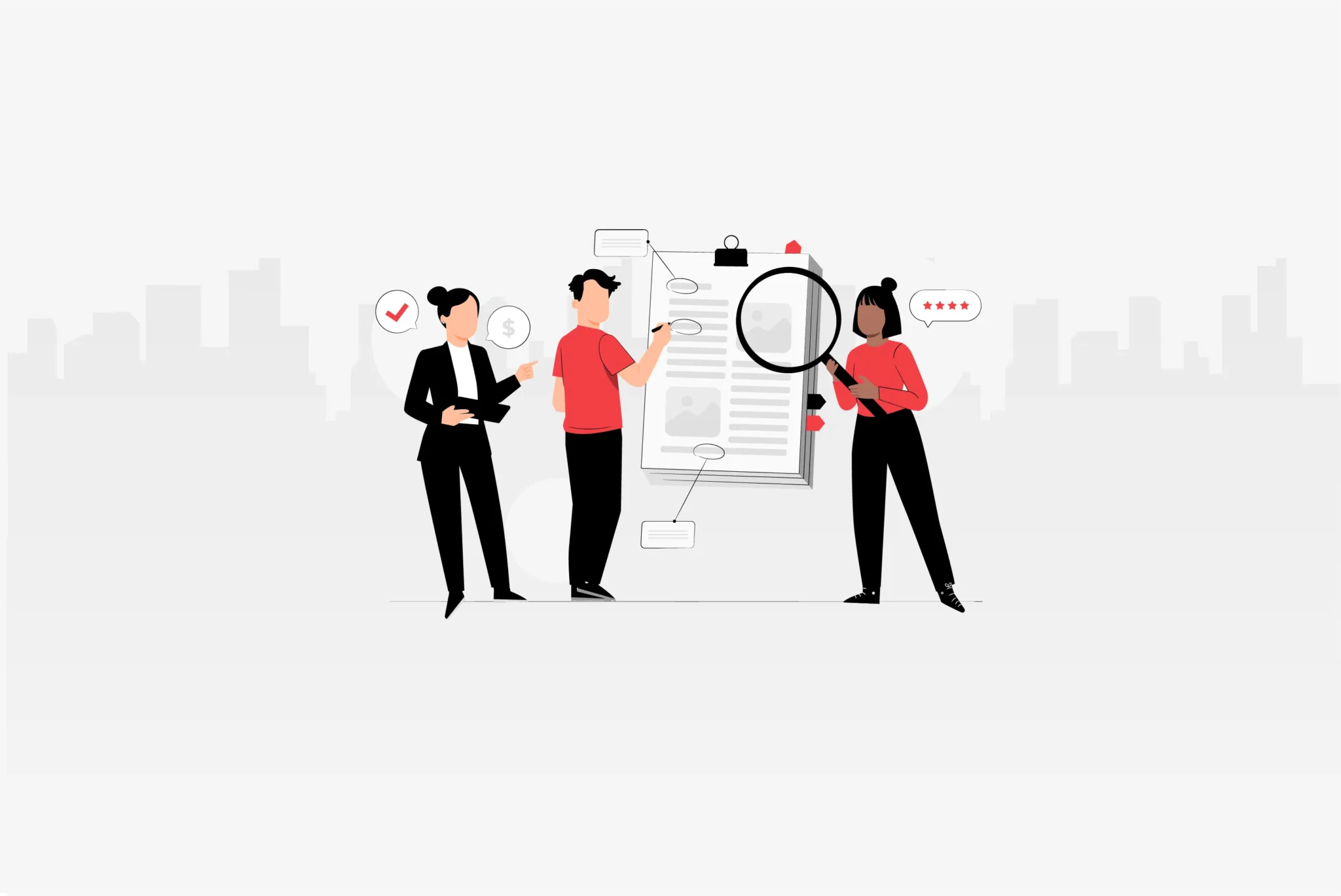It is quite natural to assume that a talent assessment tool is only necessary when hiring new employees. But the truth is far from that. Actually recruiters can use talent assessment tool anytime to find out whether or not their already onboarded candidates are lacking specific skills.
Talent assessment offers a data-driven insight into employees’ skills, strengths, growth areas, and potential. It transforms vague assumptions into clear, actionable information, enabling organizations to tailor their approaches to individual employees and teams. This blog dives deep into the multifaceted realm of talent assessment, exploring how it can revolutionize performance improvement strategies, facilitate skill matching, drive team alignment, and foster continuous growth.
A strategic approach to performance enhancement
Talent assessment has emerged as a cornerstone in modern human resource management, revolutionizing the way organizations enhance employee performance. It is more than just an evaluation; it’s a strategic methodology that empowers businesses to optimize their workforce’s potential.
At its core, talent assessment involves a systematic and data-driven analysis of employees’ skills, abilities, and potential growth areas. This comprehensive understanding enables organizations to align individual strengths with job responsibilities effectively. By identifying gaps and areas for improvement, companies can tailor training programs and development initiatives to each employee’s unique needs.
One of the key advantages of this approach lies in its ability to foster a culture of continuous improvement. When employees recognize that their strengths are valued and their development is supported, their engagement and motivation soar. Talent assessment doesn’t just focus on current job performance; it envisions the future potential of employees, paving the way for leadership development and succession planning.
This strategic approach also bolsters communication between management and employees. Transparent discussions about assessment outcomes facilitate goal-setting and performance expectations. Overall, understanding talent assessment as a strategic tool arms organizations with insights to make informed decisions, nurturing a high-performance environment that propels both individual growth and the company’s success.
Leveraging talent assessment for employee growth
In today’s data-driven world, the integration of talent assessment into employee development strategies has proven to be a transformative force. The utilization of data-driven insights empowers organizations to unlock the full potential of their workforce, propelling individual and collective growth.
Talent assessment goes beyond mere intuition or surface-level evaluations. It harnesses the power of data analytics to provide objective insights into employees’ strengths, weaknesses, and areas with untapped potential. These insights enable organizations to tailor development plans that align with both individual aspirations and business objectives.
Through data-driven talent assessment, organizations can identify skill gaps and training needs accurately. This precision allows for targeted skill-building initiatives that directly impact job performance and career progression. Moreover, by offering employees a clear roadmap for improvement, organizations demonstrate their commitment to employee growth, fostering loyalty and engagement.
Data-driven talent assessment also facilitates informed decision-making. HR professionals and managers can objectively identify high-potential employees, allocate resources effectively, and create succession plans that ensure the organization’s future leadership.
Ultimately, the power of data-driven insights through talent assessment transcends assumptions and biases, providing a solid foundation for nurturing talent and enhancing employee growth. As technology advances and workplaces evolve, organizations that embrace this approach are poised to not only adapt but also thrive in an ever-changing business landscape.
Integrating talent assessment into your performance improvement strategy
Integrating talent assessment into your performance improvement strategy can be a game-changer, offering a structured approach to enhancing employee capabilities and overall organizational success. Here’s a step-by-step guide to help you seamlessly incorporate talent assessment into your strategy:
Define Objectives: Clearly outline your organization’s goals and identify the skills and competencies required to achieve them. This forms the foundation of your talent assessment framework.
Select Assessment Tools: Choose appropriate assessment methods such as skill tests, personality assessments, and performance reviews. Ensure they align with your objectives and provide meaningful insights.
Communicate with Employees: Transparently communicate the purpose and benefits of talent assessment to employees. Address any concerns and emphasize how it will aid their professional growth.
Gather Data: Administer assessments to collect data on employees’ strengths, weaknesses, and potential areas for development. Ensure confidentiality and encourage honest participation.
Analyze Results: Thoroughly analyze the assessment results to identify patterns and trends. Pinpoint areas where employees excel and where improvement is needed.
Create Personalized Development Plans: Based on the assessment findings, develop tailored development plans for each employee. These plans should include training, mentorship, and resources to address skill gaps.
Implement Training Initiatives: Roll out training programs that align with the identified developmental needs. These programs can be a mix of in-house workshops, online courses, and hands-on experiences.
Monitor and Adapt: Continuously monitor employees’ progress and reassess periodically. Adjust development plans as needed to ensure alignment with changing goals and circumstances.
Recognize and Reward: Acknowledge and celebrate employee achievements resulting from the performance improvement strategy. Recognition boosts morale and motivates ongoing growth.
By following these steps, you can seamlessly integrate talent assessment into your performance improvement strategy, fostering a culture of continuous development and elevating both individual and organizational achievements.
Using talent assessment to define performance benchmarks
In a dynamic business landscape, defining clear performance benchmarks is essential for guiding employees toward success. Talent assessment emerges as a potent tool for this purpose, allowing organizations to precisely identify and establish core competencies that drive excellence.
Talent assessment starts by evaluating employees’ skills, abilities, and potential for growth. By analyzing this data, organizations can pinpoint the core competencies that contribute most significantly to success within specific roles. These competencies become the foundation for setting performance benchmarks that align with organizational goals.
Through talent assessment, organizations can transcend generic job descriptions and tailor their benchmarks to reflect the unique requirements of their teams and industry. This precision improves job satisfaction and engagement, as employees understand the specific skills and attributes they need to excel.
Moreover, talent assessment’s data-driven approach ensures that benchmarks remain relevant and adaptable. As industries evolve, new skills and proficiencies become valuable. Talent assessment allows organizations to proactively identify these shifts and adjust their performance expectations accordingly.
By utilizing talent assessment to define core competencies and performance benchmarks, organizations create a roadmap for both individual and collective success. Employees gain a clear understanding of what’s expected, and management gains a valuable tool for measuring and guiding progress. This approach fosters a culture of continuous improvement and positions organizations to thrive in an ever-evolving professional landscape.
Tailoring learning paths with talent assessment results
Embracing a one-size-fits-all approach to employee development is a thing of the past. In today’s competitive landscape, organizations are harnessing the power of talent assessment results to craft personalized development plans that empower employees to reach their full potential.
Talent assessment offers a comprehensive analysis of employees’ skills, strengths, and growth areas. These insights provide the foundation for crafting individualized learning paths. By tailoring development plans to each employee’s unique attributes, organizations ensure that training and resources directly address specific needs, fostering accelerated growth.
These personalized plans not only elevate employees’ skills but also boost their confidence and motivation. When employees recognize that their organization invests in their professional development, their job satisfaction and loyalty naturally increase.
Talent assessment results also allow organizations to strategically allocate resources. By identifying high-potential employees and areas with skill gaps, organizations can prioritize training initiatives that yield maximum impact.
Moreover, personalized development plans align with employees’ long-term career goals. As they progress along tailored learning paths, they acquire skills that not only benefit their current role but also position them for future leadership positions.
Incorporating talent assessment results into personalized development plans transforms employee growth into a strategic initiative. It cultivates a culture of continuous learning, engagement, and excellence that propels both individuals and the organization to new heights of success.
How talent assessment facilitates employee skill matching and Team alignment
In the pursuit of organizational success, ensuring that employees’ skills are harnessed effectively is paramount. Talent assessment emerges as a pivotal tool that not only unleashes individual potential but also fosters seamless team alignment.
Talent assessment evaluates employees’ competencies, strengths, and growth areas in a systematic manner. This data-driven approach empowers organizations to match employees with roles that best capitalize on their abilities. By aligning skills with job responsibilities, organizations optimize productivity and job satisfaction, as employees feel empowered and valued in roles where they can excel.
Furthermore, talent assessment is a key to forming high-performing teams. By understanding the collective strengths and weaknesses of team members, organizations can strategically compose teams that complement each other’s skills. This synergy enhances collaboration, problem-solving, and overall team efficiency.
Beyond individual roles, talent assessment assists in succession planning and leadership development. Identifying employees with untapped leadership potential allows organizations to invest in their growth, ensuring a steady pipeline of capable leaders.
In essence, talent assessment not only enhances employee performance but also transforms teams into well-oiled machines. By harnessing the power of data to align skills and roles, organizations create an environment where employees thrive and teams coalesce towards shared objectives. This approach maximizes not only individual potential but also collective success.
Evaluating performance enhancement through ongoing talent assessment
In the realm of performance enhancement, consistent evaluation is the cornerstone of progress. Ongoing talent assessment has emerged as a dynamic approach that enables organizations to quantitatively measure and track the success of their performance enhancement strategies.
Talent assessment isn’t a one-time event; it’s a continuous process that gauges employees’ evolving skills, competencies, and growth trajectories. By periodically reassessing employees, organizations gain real-time insights into the effectiveness of their development initiatives.
The data collected through ongoing talent assessment allows organizations to identify trends, patterns, and areas of improvement. This information isn’t just valuable for individual employees; it also informs the refinement of training programs and strategic decisions at the organizational level.
Regular assessment also opens a channel for meaningful conversations between employees and management. It provides a platform to discuss progress, address concerns, and align goals. This communication fosters a sense of transparency, trust, and shared ownership of performance enhancement.
Ultimately, ongoing talent assessment transforms performance enhancement from a mere concept into a measurable reality. It empowers organizations to fine-tune their strategies, identify what’s working, and adapt swiftly to changes. By viewing performance as a dynamic journey, organizations can ensure that every step forward is a step toward collective success.
Addressing concerns and maximizing the benefits of talent assessment
While talent assessment offers remarkable advantages for performance enhancement, its successful implementation isn’t without challenges. Addressing these concerns head-on is crucial to fully harness the benefits that talent assessment can bring to organizations.
One common concern is employee apprehension. Employees might fear that talent assessment could lead to biased evaluations or even job insecurity. Transparent communication about the purpose, methodology, and confidentiality of assessments can alleviate these fears and foster a sense of trust.
Another challenge lies in the potential overload of data. Without a structured approach to interpreting and utilizing assessment results, organizations can feel overwhelmed. Developing a clear framework for analyzing data and translating it into actionable insights is essential for effective implementation.
Scalability can also pose challenges. As organizations grow, managing talent assessments across departments and locations can become complex. Standardizing assessment processes and utilizing digital platforms can streamline administration while ensuring consistency.
To maximize benefits, organizations should align talent assessment with their overall strategic objectives. Customizing assessment criteria to reflect the organization’s unique culture and goals enhances relevance and buy-in from employees.
In conclusion, while challenges exist, they can be overcome with careful planning and proactive strategies. By addressing concerns, ensuring data-driven decision-making, and integrating talent assessment into the organizational fabric, organizations can fully capitalize on its potential to drive performance enhancement and foster a culture of continuous growth.
Conclusion
In the ever-evolving landscape of business, embracing talent assessment as a linchpin for performance enhancement is a forward-thinking move. As we conclude our exploration into this transformative approach, it’s evident that talent assessment transcends conventional evaluations. It empowers organizations to recognize their employees’ unique capabilities, align them strategically, and catalyze both individual and collective growth.
By addressing concerns, integrating feedback, and leveraging data-driven insights, organizations can maximize the benefits of talent assessment. As the world of work continues to evolve, the synergy between talent assessment and performance enhancement ensures that organizations remain adaptable, competitive, and committed to nurturing a workforce that is not just skilled, but engaged and poised for ongoing success. The path to excellence lies in recognizing and capitalizing on the power of talent assessment—a strategic ally in the journey toward a brighter future.
Testlify offers a range of assessments and challenges that allow you to gauge candidates’ knowledge, problem-solving skills, and creativity in real-world scenarios. With Testlify, you can administer real-world challenges that simulate the actual assessment process, giving candidates the opportunity to showcase their skills and approach. The platform provides a structured and standardized assessment process, allowing you to compare candidates objectively and make informed decisions. By incorporating Testlify into your hiring process, you can ensure a more comprehensive and reliable evaluation of candidates’, ultimately helping you identify the most qualified individuals for your team.
With our extensive test library, you can objectively evaluate candidates’ abilities, ensuring you shortlist the most talented individuals efficiently. Ready to unlock the potential of your hiring process? Book a free 30-minute live demo with Testlify. Our expert team will guide you through the platform, showcasing relevant skill tests tailored to your organization’s needs. With our support, you can streamline candidate selection, saving valuable time and resources.








